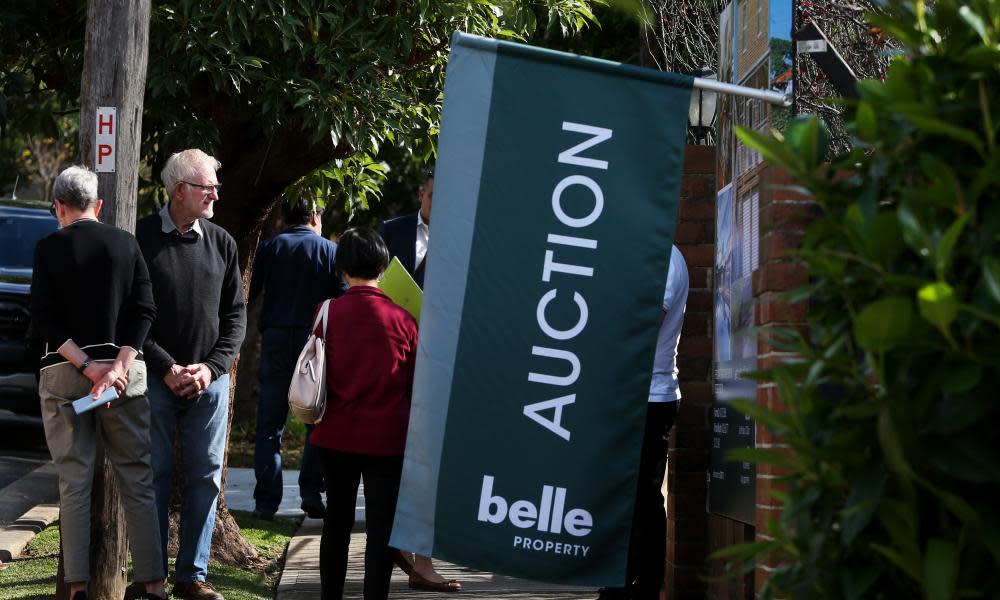House of cards: Australia’s main response to the Covid recession was to keep home prices booming

Death, taxes and rising house prices. The latest residential property price data shows that after a blip in the June quarter of last year, the Covid recession has had nary an impact on house prices as they continue to surge across the nation.
Perhaps the overriding aspect of the Morrison government’s economic response to the pandemic has been to, above all else, keep house prices going up. To be fair though, this has been the overriding aspect of economic policy for decades now in Australia – especially since John Howard was elected.
So rather than look to use the recession as a time to push public works or (God forbid) renewable energy projects, instead through the government’s “HomeBuilder” policy the emphasis has been on subsidising private home building.
This has also been the underlying response of numerous state governments – and continue to be so with the NSW government this week announcing a $25,000 first home buyers’ grant.
With all shoulders to the wheel of house prices, we have seen in the first three months of this year the strongest quarterly housing growth for more than a decade:
If you can’t view the graph click here
Residential prices across Australia’s capital cities rose 5.4% in the first quarter of this year – the strongest growth since December 2009 when the Rudd government was also doing all it could to keep prices rising during the GFC.
The average price growth of 7.5% is no record, but so quickly have prices been rising over the past six months that if it were to continue we would likely see average annual rises of around 18% by September.
The prices have been led this year by Hobart, Canberra and Sydney, but every capital city is showing strong growth:
If you can’t view the graph click here
Will prices keep going up? There is no reason to think not.
When we look at the link between housing finance growth and residential prices, the huge spike in home loans suggests continuing solid price increases across the nation:
If you can’t view the graph click here
Should the relationship between home loans and housing prices hold in Sydney by September, the annual growth of house prices will have gone from the current level of 8% to closer to 17% given home loans are growing at around 42%:
If you can’t view the graph click here
But the story of the recent boom in prices is also one of houses versus apartments:
If you can’t view the graph click here
In every capital city the prices of established dwellings have massively increased faster than that of attached dwellings.
In Sydney apartment prices in the past year rose just 2.8% compared with 10.8% for houses.
That is why, across the nation, median house prices are at or near record levels. In March this year, the median house price in Sydney was $1.05m. It was also the first March quarter since 2012 where the median price was higher than it was in the previous quarter:
If you can’t view the graph click here
In December 2019 the record high median house price in Melbourne of $760,000 was set; in the March quarter this year a new record of $824,500 was set.
But the record increase is not observed among apartment prices:
If you can’t view the graph click here
This is not a new thing. Ever since the Reserve Bank began its run of cutting rates at the end of 2011, the boom in prices has been about houses, not apartments.
In Melbourne, for example, established house prices are now 62% higher than they were at the end of 2010, while apartment prices are up “just” 27%:
If you can’t view the graph click here
A major reason is that the ever lower interest rates from 2010 to 2016 fuelled a massive apartment building boom, the likes of which had never before been seen:
If you can’t view the graph click here
The drastic rate cuts and government subsidies this time round have led to a surge of house building, while apartments are only being built at about the same rate they were a decade ago.
Will this increase in building bring about a moderation of prices as supply gets closer to demand? For now, this is unlikely – the increase in home building is strong, but not massively out of whack with the past.
And thus the government policies that keep adding to demand for housing, whether it be buying established homes or building new ones, seem set to do what they are always intended to do – keep house prices growing.
Greg Jericho writes on economics for Guardian Australia

 Yahoo Movies
Yahoo Movies 
